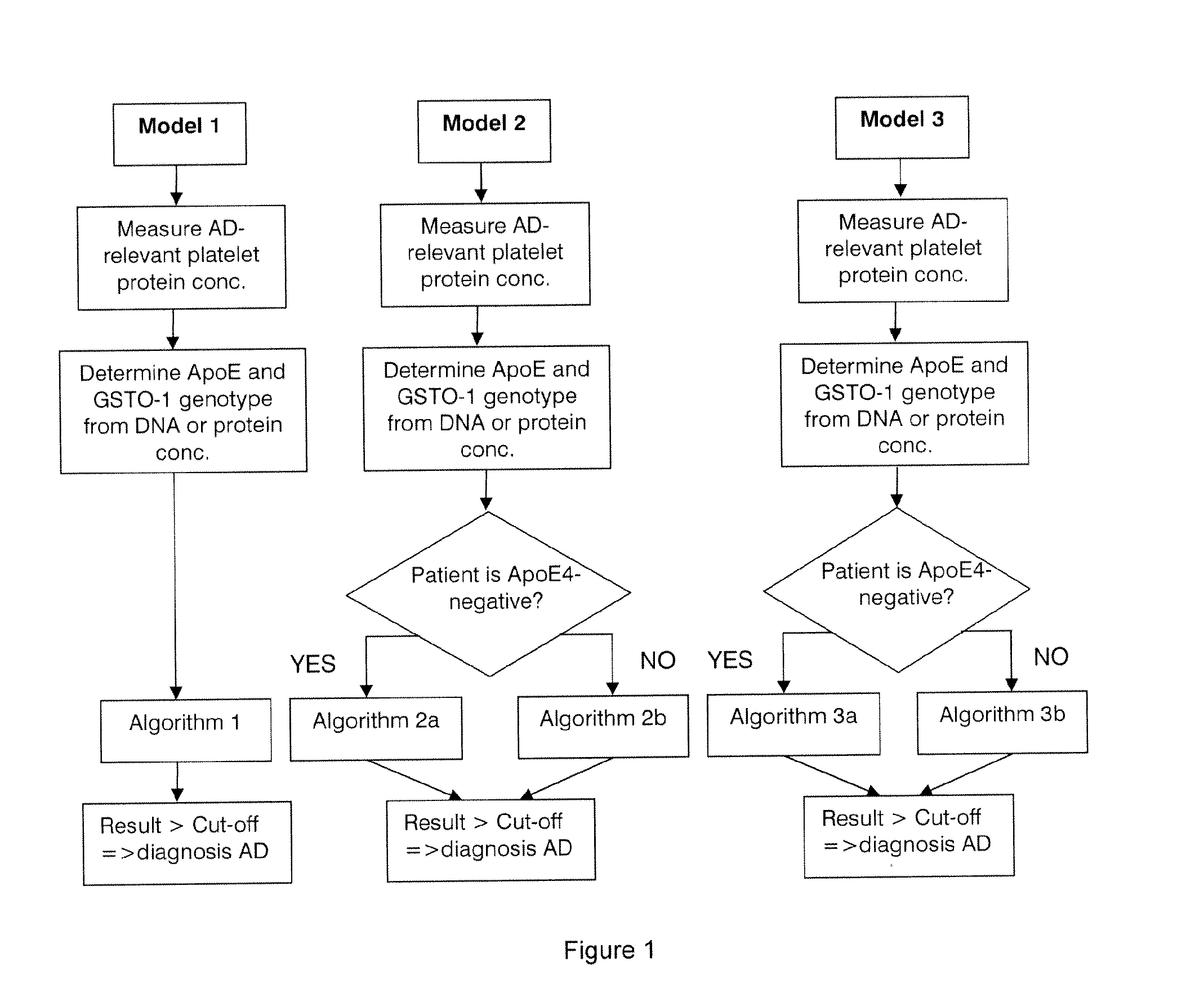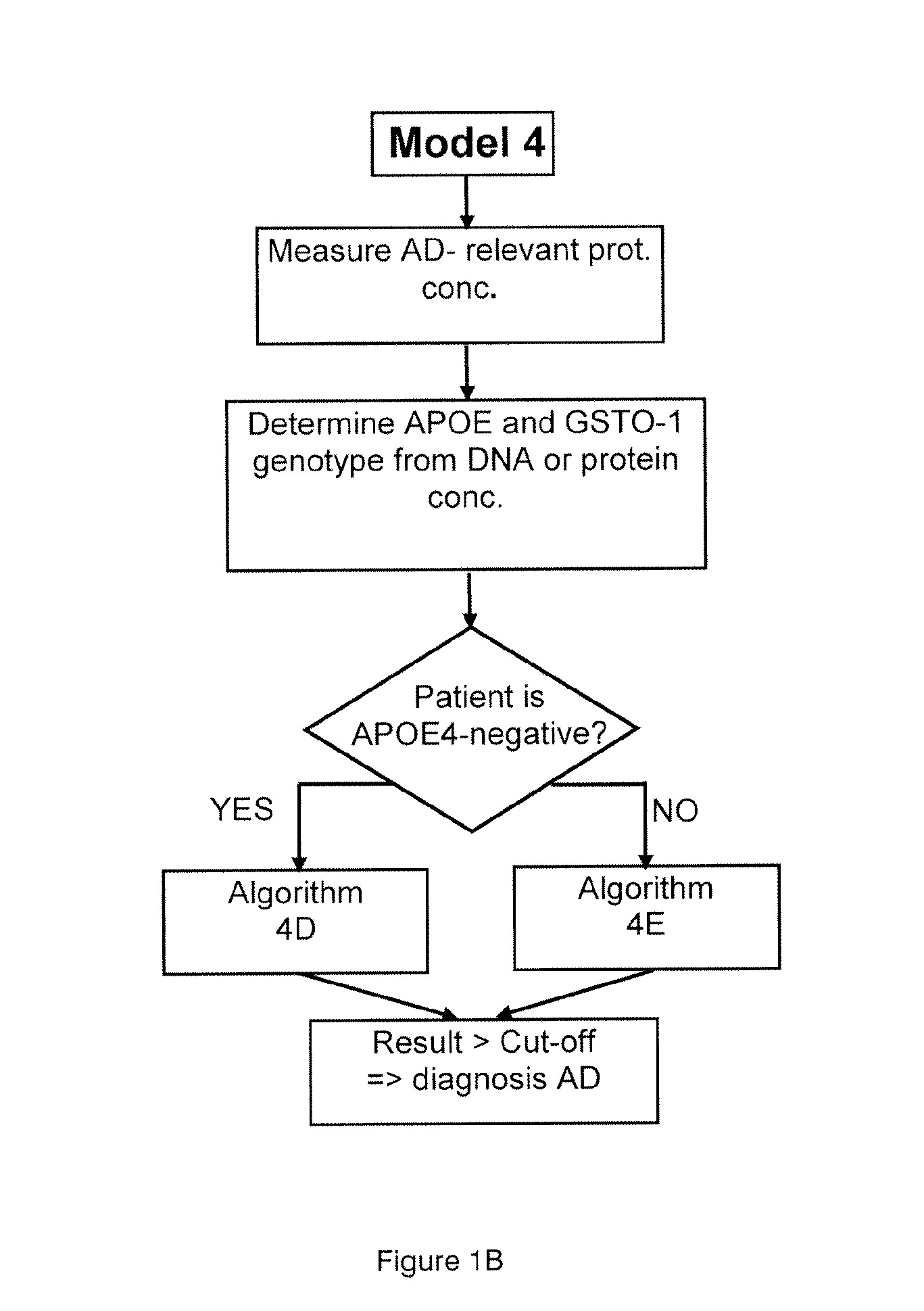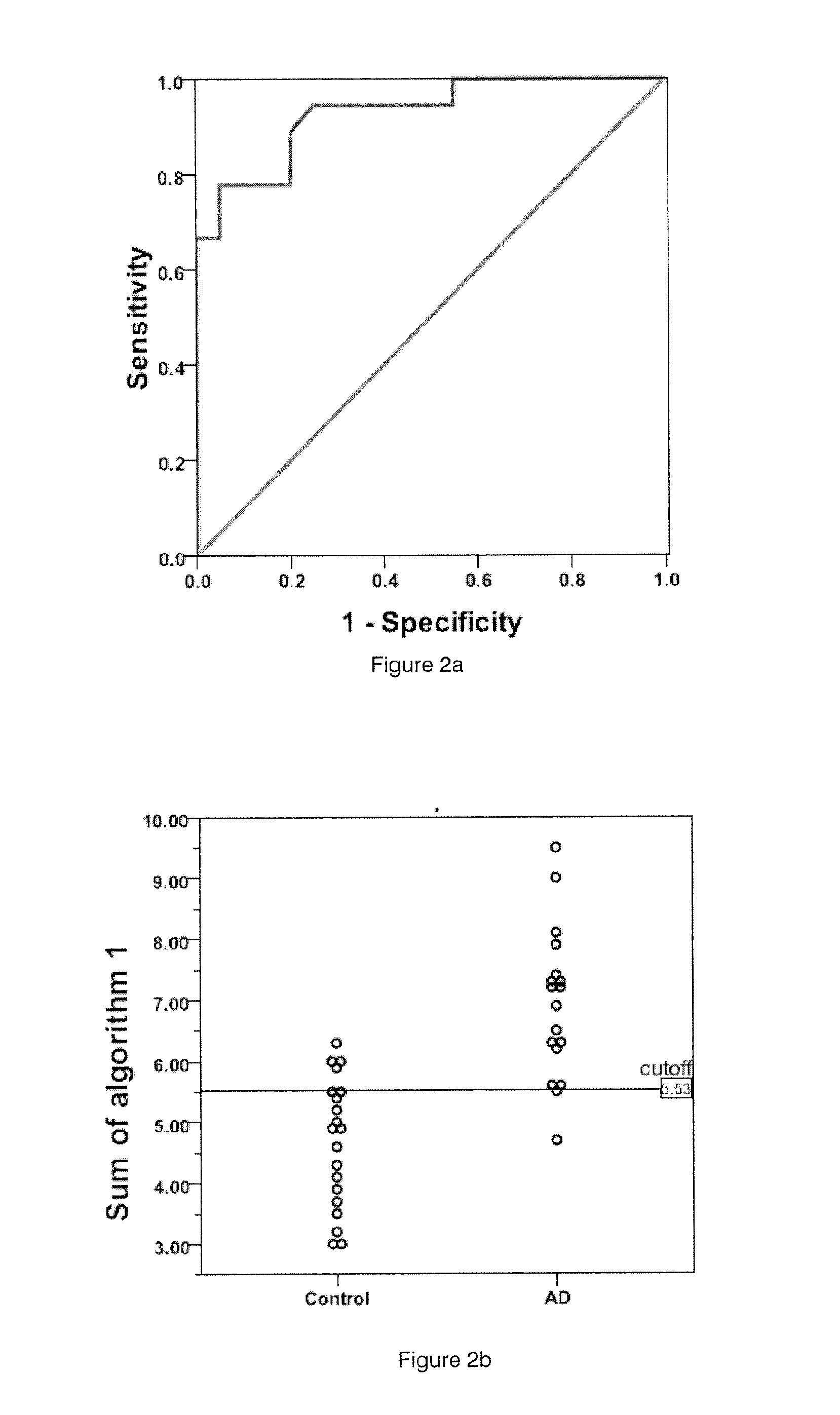Diagnostic method for alzheimer's disease
- Summary
- Abstract
- Description
- Claims
- Application Information
AI Technical Summary
Benefits of technology
Problems solved by technology
Method used
Image
Examples
example 1
Analysis of Single Biomarker Assays and Assays Comprising Three, Four and Five Biomarkers for the Diagnosis of Alzheimer's Disease
[0099]Samples were collected in two phases and divided into a discovery set and validation set. The standard abundance of each platelet protein was measured using 2D-DIGE and ROC curves were generated in order to obtain optimal cut-off, actual cut-off, sensitivity and specificity values for each biomarker. The results for each of these single protein assays are shown in Table 5.
TABLE 5ROCSingleSamplecurveOptimalActualSensitivitySpecificityAssaysetAUC95% CISignificancecut-offcut-off(%)(%)MAO-BDiscovery0.8470.714-0.9801.0721.0728980Validation0.8260.689-0.9641.0481.07275.180TotalDiscovery0.7970.655-0.9400.0021.8021.80283.365tropomyosinValidation0.7040.539-0.8690.0271.7481.80256.576.2CoagulationDiscovery0.7610.601-0.9210.0061.0361.0367865Factor XIIIaValidation0.7170.551-0.8830.0190.9291.03647.479ApoE4Discovery0.7970.647-0.9470.0020.50.56790Validation0.7440.58...
example 2
Selection of 14-3-3 Gamma as an Internal Extraction Standard Protein
[0111]12.5 μg platelet protein from 24 Alzheimer's disease patients and 24 sex- and aged-matched controls was analysed in a 1D Western blot. The results are illustrated in FIG. 6 and show that the Mao-B signal is more intensive in platelet samples from Alzheimer's patients than control samples, whereas the intensity of the signal for 14-3-3 gamma is equal in all samples. As shown in FIG. 7, by measuring the Moa-B signal of 12.5 μg platelet protein without any normalisation only a low significant increase (P<0.01) can be detected in the Alzheimer's samples. After normalisation with 14-3-3 gamma however, the significance increases to P<0.00000007, which demonstrates that the precision with which a protein can be quantified in a sample increases enormously with the application of an internal extraction standard.
[0112]FIG. 8 shows a representative Western blot for the application of ERK2 as an internal extraction standa...
example 3
Verification of Alzheimer's Disease Polymorphism in GSTO-1
[0113]2D gel electrophoresis analysis revealed three GSTO-1 isoforms with pI values of 6.19, 5.87 and 5.64 (FIG. 9). These isoforms show distinct expression patterns in the three groups: AD patients, PD patients and age- and sex-matched controls. Gel-filtered platelet samples of non-ApoE Alzheimer's patients revealed significant up-regulation of the GSTO-1 isoform with pI 6.19 (increased by 35%), whereas the GSTO-1 isoform with pI 5.87 is down-regulated by 60%.
[0114]The results in FIG. 9 represent two mis-sense polymorphisms in exon 4 of GSTO-1 (Ala140Asp and Glu155A). The GSTO-1 spot with pI 6.19 corresponds to WT. The spot with pI 5.87 represents an isoform where Ala140 is substituted by Asp (Ala140Asp). The spot with pI 5.64 may relate to a post-translational modification of unknown origin. Equal expression of the GSTO-1 spots with pI 6.19 and pI 5.87 correspond to a WT isoform and an isoform comprising the Ala140Asp subst...
PUM
| Property | Measurement | Unit |
|---|---|---|
| Fraction | aaaaa | aaaaa |
| Fraction | aaaaa | aaaaa |
| Fraction | aaaaa | aaaaa |
Abstract
Description
Claims
Application Information
 Login to View More
Login to View More - R&D
- Intellectual Property
- Life Sciences
- Materials
- Tech Scout
- Unparalleled Data Quality
- Higher Quality Content
- 60% Fewer Hallucinations
Browse by: Latest US Patents, China's latest patents, Technical Efficacy Thesaurus, Application Domain, Technology Topic, Popular Technical Reports.
© 2025 PatSnap. All rights reserved.Legal|Privacy policy|Modern Slavery Act Transparency Statement|Sitemap|About US| Contact US: help@patsnap.com



